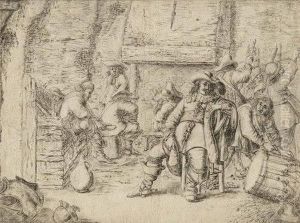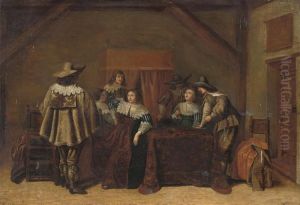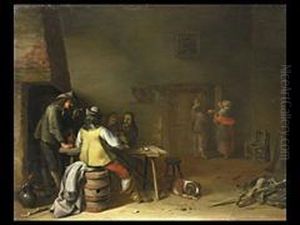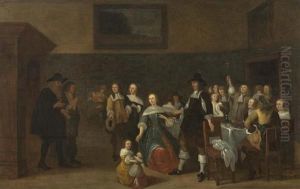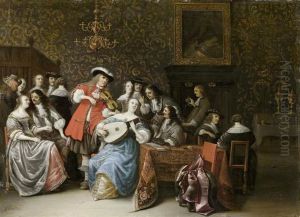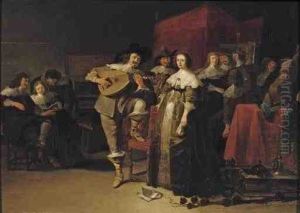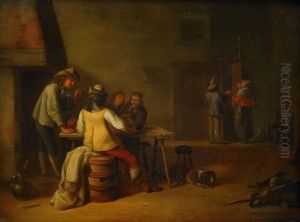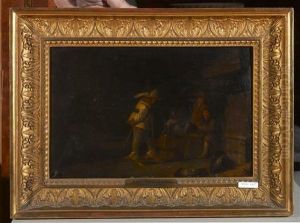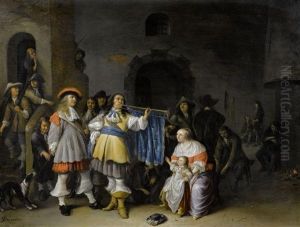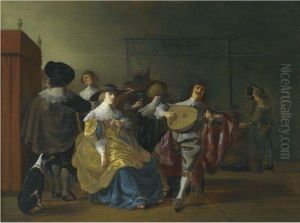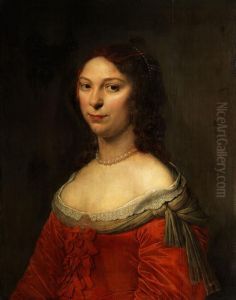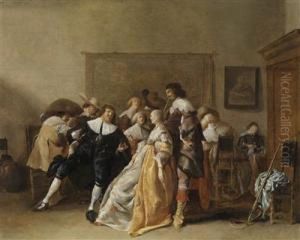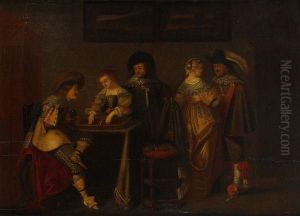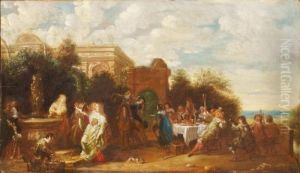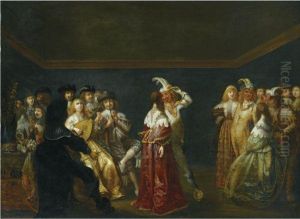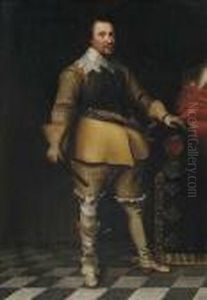Antonie Palamedesz Paintings
Antonie Palamedesz, also known as Anthonie or Antonie Palamedes, was a Dutch Golden Age painter, known primarily for his genre works and portraits. He was born in 1601 in Delft, Netherlands, into a family of Flemish origin. His father, Palamedes Palamedesz, was also a painter, which provided Antonie with an artistic environment from an early age.
Palamedesz received his early training in the studio of Michiel Jansz van Mierevelt, a prominent portraitist of the time. However, he did not follow in his teacher's footsteps as a portrait artist alone. Instead, Palamedesz developed a keen interest in genre painting, depicting scenes of daily life with a particular focus on the elegance and frivolity of contemporary society.
Throughout his career, Palamedesz exhibited a refined sense of composition and a talent for capturing the textures of luxurious garments and interiors. His works often included groups of people engaged in conversation, playing music, or enjoying other leisure activities, and they were marked by a lively and elegant atmosphere. The influence of his contemporaries, such as Dirck Hals and Pieter Codde, can be seen in his approach to genre scenes.
In 1631, Palamedesz became a member of the Guild of Saint Luke in Delft, which was an important milestone in his professional life. His membership in the guild allowed him to sell his paintings and take on students. He later moved to Amsterdam, where he continued to work and contribute to the vibrant artistic scene of the Dutch Golden Age.
Antonie Palamedesz's contribution to Dutch painting is significant, as he captured the spirit of his time with a delicate and often humorous touch. His works provide valuable insights into the social customs and culture of the seventeenth-century Dutch elite. He passed away in Amsterdam in 1673, leaving behind a body of work that continues to be appreciated for its charm and historical value.

